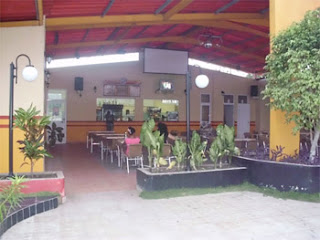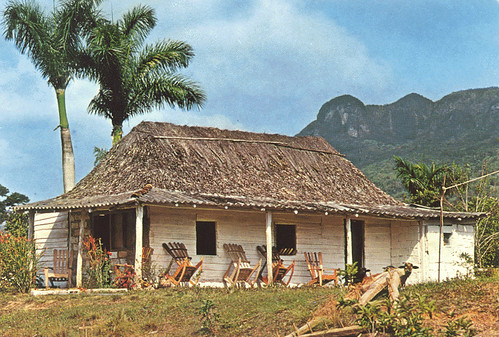“Guantanamo: Cuba’s Cinderella City” (part I)
by Alberto N Jones
HAVANA TIMES — We learned through the Cuban media that
the upcoming July 26 celebrations of “National Rebellion Day” (commemorating
the guerilla attacks in 1953 that sparked the Cuban Revolution) would take
place here in Guantanamo: Cuba’s “Cinderella City.”
This filled us with local pride and joy for our being
recognized as a community that, while suffering and neglected, is also
unshakeable.
Shortly after, I recalled that this honor had been
conferred upon this city twice before in the past, though a little later —
shortly after the celebrations — everything returned to the same old thing:
apathy, a lack of creativity and no accountability for what’s poorly done.
Unfortunately, all of this has come to characterize
Guantanamo Province in particular and southeastern Cuba in general.
The history of Guantanamo is cruel, sinister and
associated with tragedy and misfortune. Before the revolution this was the most
neglected and backward area of the country, one where education, health care,
communications, sports, industry and culture were noted for their low levels.
During every election campaign people politicians,
opportunists and political operatives would appear promising schools, water and
sewage systems, hospitals and jobs – though these individuals would only
deceive everyone once the election was over.
It was not until the election of President Ramon Grau San
Martin into office (1944-48) that large public works projects were implemented
that provided 80-85 percent of the current drinking water and sewage services
and paved streets of Guantanamo City.
Prior to his election, all municipalities and the city of
Santiago de Cuba were connected to Guantanamo City by dirt roads, which became
impassable during the rainy season.
A Curse Disguised As Stability
As spoils of the Cuban-Spanish-American War of 1898, in
1903 the United States occupied 45 square miles of land surrounding Guantanamo
Bay, one of the best natural, deep water bays in the world. This was later
turned into the Guantanamo Naval Base — “Gitmo” — which remains in existence up
through today.
The presence of this military base on Cuban soil was a
curse disguised as economic stability for the area. This was because it
provided some 2,500 full and part-time jobs during peace time and many more
during times of international conflict, thus turning the facility into the
backbone of the local economy.
Every week, hundreds of US soldiers and officers who
would take their regular passes from the base fostering the largest red-light
districts in Cuba. This was in Guantanamo City and Caimanera (the town just
north of the base), with hundreds of women from across the country, famous
pimps, sexual perversion, drug addiction and trafficking, violence, venereal
diseases, blackmail, gambling and bribery coexisting. In some instances these
activities were even admired by the leading citizens of our community.
Guantanamo’s underdevelopment and absolute dependency on
the legal and illicit economic resources coming from the base conferred
absolute impunity on the US military, making all crimes — no matter what their
severity — outside the legal reach of Cuban authorities.
For that reason, the 1953 assault on the Moncada Barracks
resonated powerfully among youth, who had been humiliated and frustrated by the
society imposed on them. This is what led them to join the movement en masse,
shed their blood, give their lives and turn Guantanamo into one of the most
important anti-Batista bastions during the insurrection.
Immediately after the triumph of the revolution, the
sailors stationed at Guantanamo Bay were prohibited from taking their leaves
off base, the red-light district was shut down, and prostitutes were sent to
schools.
The hiring of new Cuban civil servants for work on the
naval base was barred and the naval base rapidly became transformed into a
dangerous beachhead and center for conspiracy on the island.
Thousands of common criminals and counterrevolutionaries
found refuge in this enclave and hundreds went on to receive military training
in Central America and Miami – some of whom returned to the naval base and were
then infiltrated back onto Cuban soil to commit all sorts of criminal
activities.
Tens of millions of useless Cuban pesos were overtly
laundered for dollars on its premises, and the formerly English-only local
naval base radio station, WGBY, became bi-lingual, allowing it to openly incite
Cubans to leave their country.
A number of Cuban workers were detained, tortured and
murdered on the naval base. Other Cuban
border guards suffered gunshot wounds and three were murdered by shots coming
from the base, which led the Cuban government to shut off the source of its
water supply.
The commanding officer of the naval base then summarily
dismissed 700 Cuban employees, which was supposed to have caused the collapse
of Guantanamo’s economy with its 100,000 inhabitants.
Serious Collateral Damage
This partial summary is an attempt to describe the level
of hostility, danger and threat that surrounds Guantanamo. All of this turned
the area into the second largest minefield in the world and into a place where
its perennial fuse could set off an unprecedented military firestorm on our
continent.
This forces the Cuban government to allocate large
amounts of financial resources in defensive fortifications, which in turn leads
to the stagnation of the social, agriculture, industrial, cultural and
scientific development of that area. The collateral damage has been serious and
irreversible in some cases.
Over half a century, Guantanamo has ceased to be the most
diverse community in Cuba, with a unique mixture of customs and cultures
derived from the presence of immigrants from Spain, all of the Caribbean
islands, Italians, Germans, Americans, British, Swiss, Lebanese, French, Poles,
Pakistanis, Chinese, Hindus, Syrians, Mexicans, Canadians, etc.
Yet today its residents are described pejoratively as
homeless “Palestinians” in their own country (when in western Cuba) and they
have one of the highest rates of migration abroad.
Guantanamo, the region of Cuba that produced the most
physicians per capita in the country in the first five graduating classes after
the triumph of the revolution, has lost its radiance and incentive.
Guantanamo, the region with the highest level of rainfall
and water reserves, the largest producer of coffee, cocoa and salt in the
country, has lost most of its productive capacity, while a large section of the
country is dry and thirsty.
Guantanamo, with its once famous Samy’s Ice Cream,
Tudela’s Candy, India Chocolate, Coconut Pie, 13/13 Laundry Soap, the Ideal Bus
Company, the America Movie Theater, the Monte Carlo Cabaret, the Modelo Bakery
and “Frio/Caliente” (a popular beach area along the Bano River), has not been
able to preserve these for our children, while they become dehydrated in this
the warmest part of the country.
Guantanamo, the birthplace of the first human of African
ancestry to travel into outer space; the home of the Ecological Processing
Center for Solid Urban Waste (CEPRU in Spanish), where a descendent of Mariana
Grajales placed Cuba on the world map before 3.5 billion viewers watching CNN
confer upon her the environmental title of “Heroes for Defending the Planet”; the
city’s excellent Olympic athletes, and the impregnable defensive barrier
erected by the Border Brigade as the first and most important trench for
protecting the nation, all explain and justify why these people deserve a
better future.

The “Colonia Española” and the “Block Catalan” for
whites, the “Club Moncada” and the “Nueva Era” for blacks, the “Siglo XX” for
mulatos (mixed race), its dozens of lodges, churches, the British West Indian
Welfare Center, the Haitian Community Center, the Tumba Francesa, Guantanamo’s
Chinese societies, its children’s choirs, school bands, its shower of stars in
the endless search for talent and in sports competitions, each of them in their
own particular way have fostered and bestowed on Guantanamo a certain vitality and moral
strength.
All of this has enabled most of its youth to confront,
resist and triumph over the temptations emanating from the largest corrupting
center in the nation.
To restore those arms — ones that protect the present
generation of Guantanamo residents and those people of southeastern Cuba — must
be an inescapable and non-postponable commitment for all of us.









